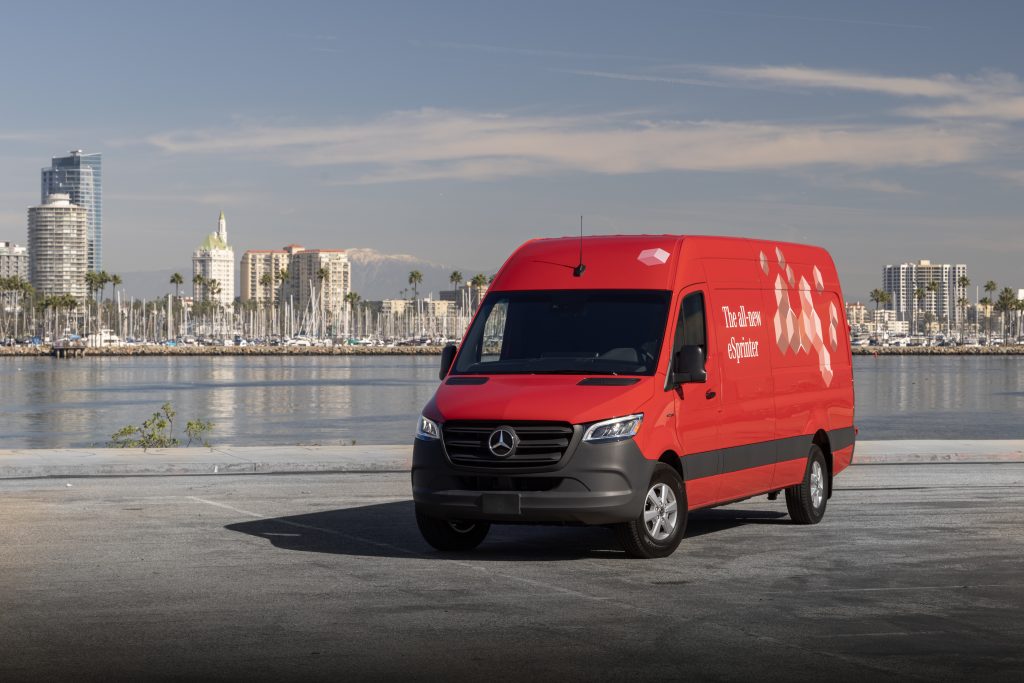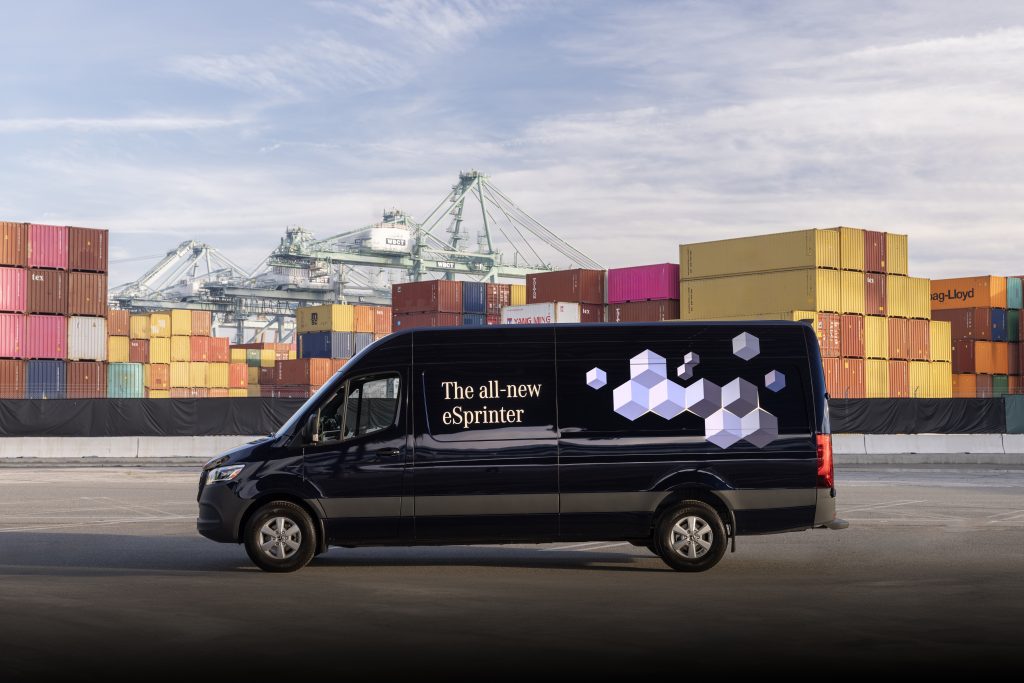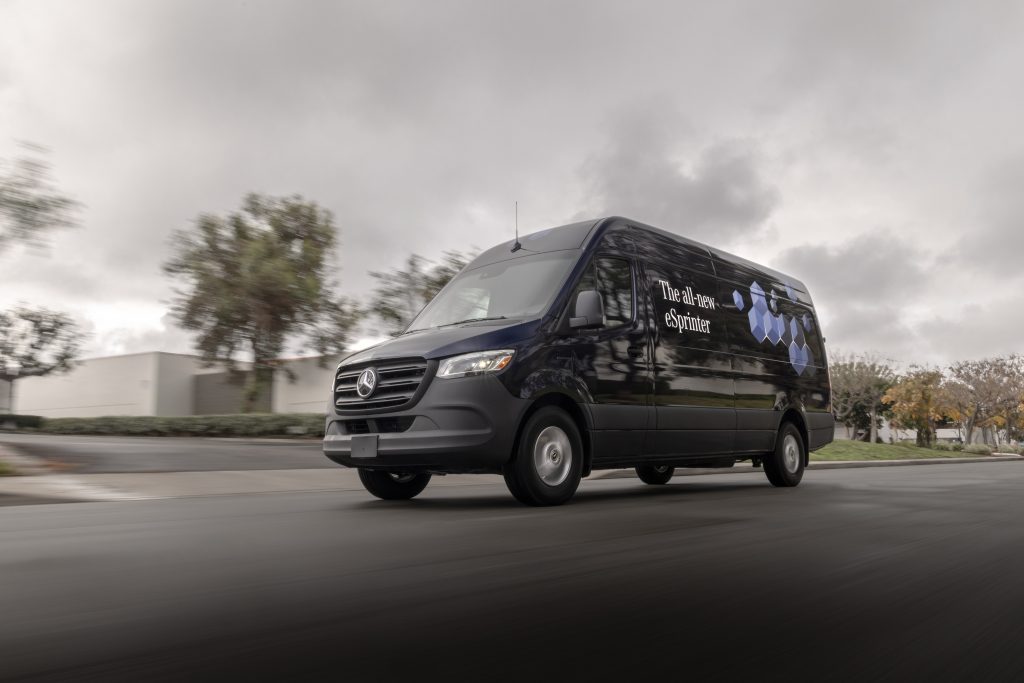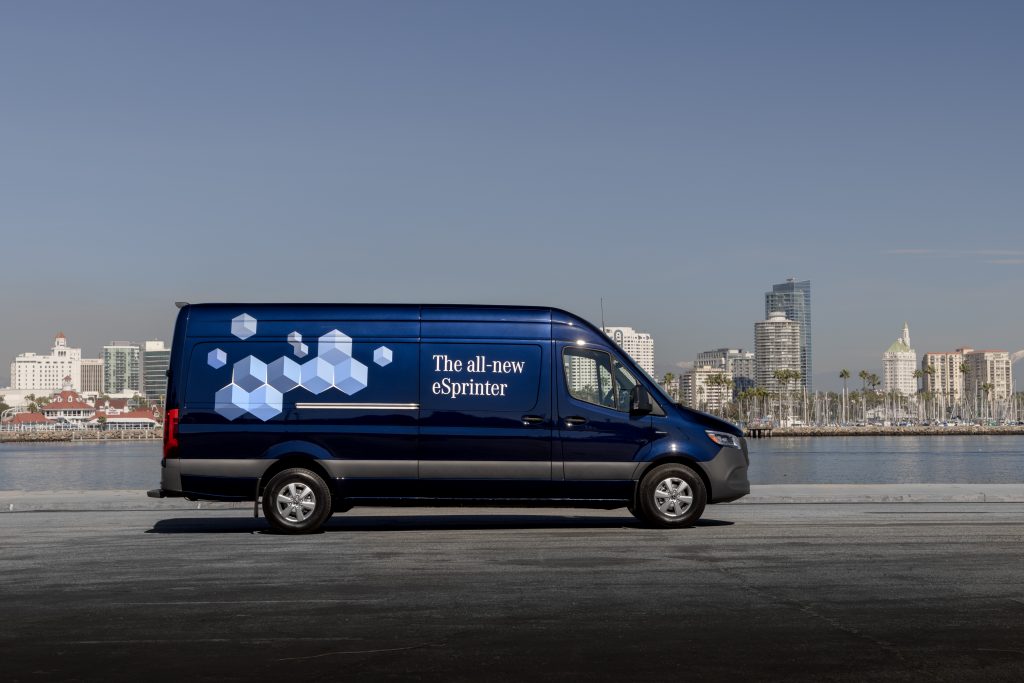Mercedes-Benz continues its charge in electric mobility with the debut of the eSprinter electric vehicle. The van serves as an alternative to the Sprinter and it represents a big leap in the brand’s electrification strategy, which seamlessly merges efficiency, range, and utility.

Versatility at the Core of the eSprinter
Mathias Geisen, Head of Mercedes-Benz Vans, emphasizes the eSprinter’s role in demonstrating the brand’s serious commitment to its ESG goals. With a starting price of $71,866 in North America, this electric pioneer is poised to revolutionize fleet operations.
In a nutshell, the electric version of the Sprinter offers a sustainable alternative for businesses seeking an eco-friendly and efficient solution.
Performance of the eSprinter
According to MBUSA, the eSprinter cargo van has a 170-inch wheelbase and a 107.1-inch high roof with a Gross Vehicle Weight Rating (GVWR) of 9,370 lbs. and a max payload of 2,624 lbs. The electric van is juiced up by a 113-kilowatt-hour (kWh) battery that propels it to approximately 273 miles at full charge.
The use of lithium/iron phosphate technology, free of cobalt and nickel, ensures the durability of the battery unit. Meanwhile, its active thermal management sets a benchmark in efficiency for commercial EVs.
Innovative Design
Innovative design and adaptability are key components of the eSprinter’s success. Constructed on a modular layout with three fundamental components, the platform provides flexibility in accommodating various vehicle configurations, irrespective of wheelbase or battery size.
The compact and potent electric motor situated in the rear module contributes to the electric van’s low center of gravity, thus, enhancing its handling and overall safety.
The Electric Powertrain
The eSprinter is fitted with a highly efficient permanent magnet synchronous motor (PSM) delivering up to 100 or 150 kilowatts. With a peak torque of up to 295 lb-ft, this motor ensures optimal performance and responsiveness for at least 30 seconds.
This innovative powertrain stands as a testament to Mercedes-Benz’s dedication to advancing electric propulsion in commercial vehicles.
In-Car Technology and Safety
The eSprinter benefits from the advanced in-car technology and cloud-based services usually reserved for the luxury models of its maker. It is equipped with the latest Mercedes-Benz User Experience (MBUX) that introduces features like the “Hey Mercedes” voice control assistant for enhancing the overall driving experience and non-distracted driving.
Safety remains a top priority with standard features such as Active Brake Assist, Blind Spot Assist, and ATTENTION ASSIST, complemented by optional features like a digital rear-view mirror for improved visibility during reverse maneuvers.
Efficiency and Drive Modes
From the relaxing feel of “Comfort” mode to the enhanced efficiency of “Economic” mode and the extended range of “Maximum Range” mode, the EV seamlessly adapts to diverse driving scenarios and preferences. Regenerative braking further maximizes range, offering five selectable recuperation levels to suit driver preferences.
Charging and Connectivity
The eSprinter is capable of supporting both alternating current (AC) and direct current (DC). The onboard charger, showcasing a maximum power of 9.6 kilowatts, ensures efficient charging at wallboxes, while fast-charging capabilities of up to 115 kilowatts significantly reduce charging times.
Likewise, Mercedes me connect services, including “Navigation with Electric Intelligence,” elevate the ownership experience by optimizing routes and charging strategies based on real-time conditions.
Comprehensive Service Packages for the eSprinter
Maintenance costs for the first four services within the initial four years or up to 100,000 miles of eSprinter ownership are covered by Mercedes-Benz, including inspections of high-voltage components. A complimentary battery certificate guarantees a minimum remaining capacity of 70 percent for eight years or up to 100,000 miles.



































































































